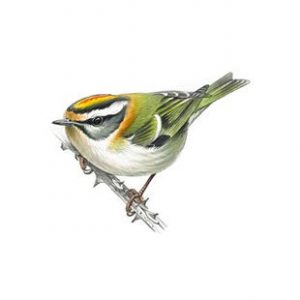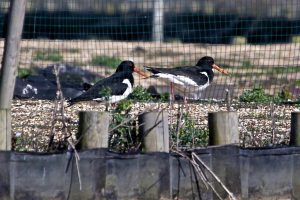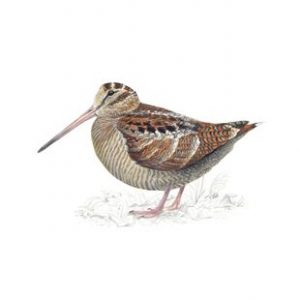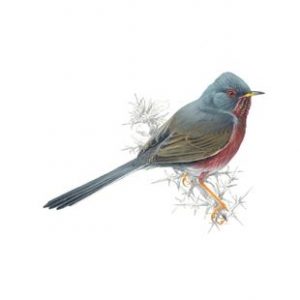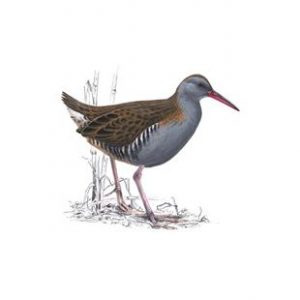William Legge writes:
It was a changeable few months with a bitter freeze at the end of January, a slightly warmer but exceptionally dry February and a very wet and dull March. As I put pen to paper in this first week of April, it seems we have the first real semblance of spring with a string of fine days and warmer temperatures – long may it last!
With Fleet Pond largely frozen for the second half of January, there were few reports of note. However, for those brave enough to venture out there were goodies to be found, with the best sighting of the month coming in the form of a Firecrest feeding in holly near the picnic tables on the north side of the reserve on January 21st. (illustrated below)
This was followed by a Common Chiffchaff on January 30th, a very scarce visitor to the reserve in winter. (illustrated below)
With a thaw setting-in on the last few days of the month the focus returned to wildfowl and encouragingly Tufted Ducks returned to the Pond in full force with a count of 45 logged on 11th February steadily rising to 80 on March 17th. This was the highest count at the reserve this century with good numbers remaining into early April.
Pochard put in a good showing, with a flock of six logged on 11th February, rising to 18 later in the month, with up to eight still present in early April. Gadwall numbers peaked at 26 on March 17th, but Shoveler numbers were well down on this time last year. They were generally scarce with a peak count of only three on March 17th. The fact that all four of these species of duck remain in residence as of early April provides a good omen for the upcoming breeding season.
Great Crested Grebes reappeared too. One braved it out during January’s freeze, but by mid-February was joined by another six with numbers rising to 18 in late-March, the latter no doubt supplemented by an influx of migrants.
Other notables in February included a Peregrine heading over northeast and a Woodlark at the MoD Fields, both on February 11th.
March heralds the start of spring migration, but this year’s soggy weather reduced reports from the reserve until mid-month by which time there was already a flurry of activity.
The first migrant wader of the spring appeared on March 17th, a mobile and vocal Oystercatcher circling the Pond several times. The two below were photographed by John Sutton in a previous year at the Pond.
Other notable waders on that date included 19 Common Snipe and a Woodcock, the latter located at the Dry Heath and a likely migrant too. (illustrated below)
Summer migrants also started to appear on March 17th with the first Sand Martin of the year zipping through north, and a mass arrival of Common Chiffchaffs with seven in song, rising to ten by March 30th. Other first of season arrivals included a Willow Warbler on March 26th, Blackcap on March 29th, with five of the latter in song by April 3rd.
Persistent rain on March 29th brought an influx of 100 Sand Martins feeding over the Pond, along with the first (Barn) Swallows (five) of the spring.
Sights of single Mediterranean Gulls on March 26th and April 3rd were the only gulls of note during the period.
Winter migrants included up to four Brambling and a flock of 36 Siskin at the Brookly Stream corner between March 17th to 20th and a flock of eight Redwing heading over east on April 2nd.
Other reports included further sightings of Peregrine on March 24th, 25th and April 3rd. The first migrant Green Sandpiper of the year and a Dartford Warbler on the Dry Heath, both on April 3rd. The latter is particularly pleasing given the restoration work that has taken place at the Dry Heath, so fingers crossed this protected species will hang around. (see illustration below)
Cetti’s Warbler, another Schedule One species, finally seems to be colonizing the Reserve with up to four males logged in song in the latter half of March, compared to just the single territory over the last few years. (illustrated below)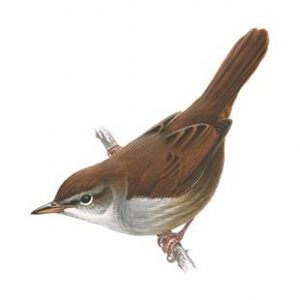
Water Rails (illustrated below) were also heard from two locations in the last weeks of March, which bodes well for the breeding season and there are eight active Grey Heron nests (up from seven in 2022) and a pair of Mute Swans on nest as I write.
Two Little Egrets were present for most of March with three roosting on March 26th. Will this be the year they finally take the plunge and attempt to nest at the Reserve? Good birding!
Contributing Observers: John Clark, Kevin Duncan, Cathy Holden, Russell Hunt, Charlotte Nash, Dave Palmer, Jeremy Soane, Graham Stephenson, John Sutton and C H Wan

